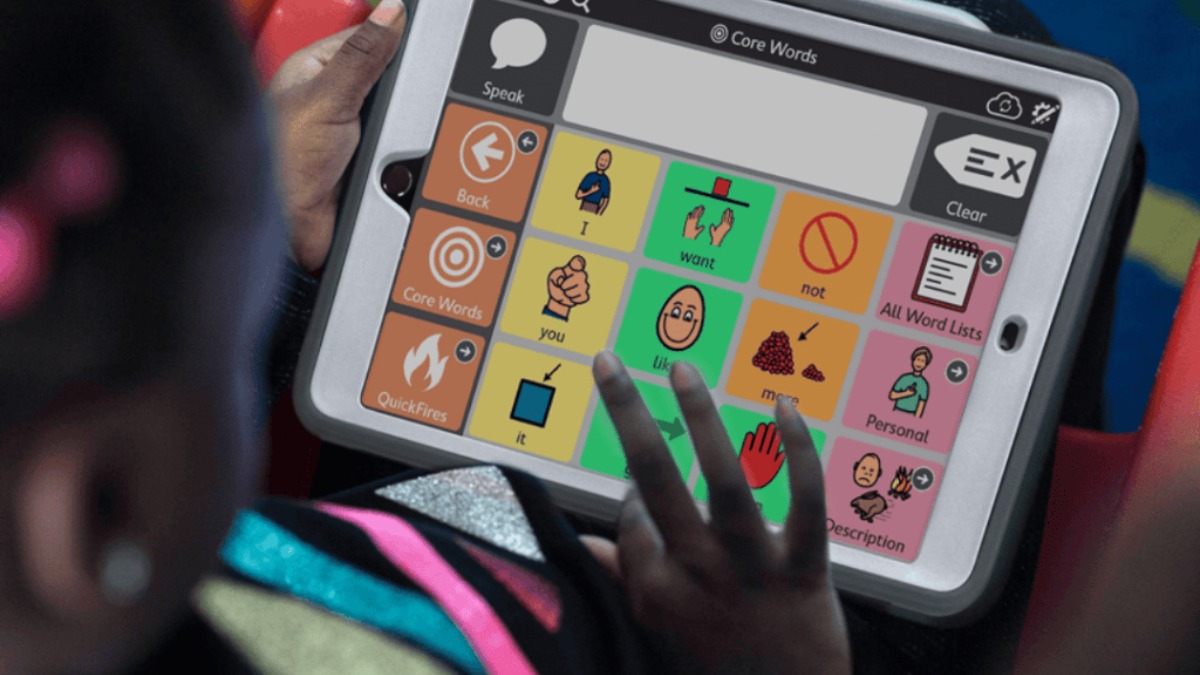DIR Floortime Strategies for Supporting Nonverbal Children
April 24, 2025
Explore effective DIR Floortime strategies tailored to help nonverbal children develop communication skills, emotional connection, and social growth.

Key Points:
- DIR Floortime is a developmentally-based approach that targets communication and emotional regulation.
- Nonverbal children can benefit from DIR Floortime strategies by engaging them in play-based, relationship-focused therapy.
- Implementing specific DIR Floortime strategies for nonverbal children can promote communication, socialization, and emotional development.
Studies have demonstrated that Floortime therapy can lead to significant improvements in social skills and emotion regulation among children with autism spectrum disorder (ASD). For instance, a systematic review of 12 studies involving 312 children aged 2 to 19 years found that Floortime interventions resulted in increased social interaction and communication abilities. Additionally, a pilot study in Taiwan reported that after a 10-week home-based Floortime program, children showed notable enhancements in emotional functioning, communication, and daily living skills. These findings highlight the potential of Floortime therapy to support nonverbal children with ASD in developing essential social and communication skills.
Importance of Tailored Strategies for Nonverbal Children
Individualized strategies are vital in DIR Floortime therapy, especially for nonverbal children. Tailored approaches offer significant benefits by catering to the unique needs and preferences of each child.
Individualized Approaches for Nonverbal Children
Nonverbal children communicate in unique ways, requiring tailored approaches to support their development. These strategies must take into account key factors such as sensory preferences, personal interests, and temperament. By focusing on what resonates with the child, parents and therapists can implement techniques that align with the child’s natural behaviors and inclinations, fostering more effective communication.
When planning activities to support communication development, it's essential to consider several key factors that can significantly impact engagement and effectiveness. These factors help create a tailored approach that fosters a positive and interactive experience for the child. Here are the key considerations:
- Sensory Preferences: Recognizing sensory sensitivities or preferences allows for the selection of activities that engage the child and promote interaction.
- Interests: Incorporating favorite toys or themes can help capture attention and encourage active participation in communication efforts.
- Temperament: Adjusting strategies to align with the child’s temperament ensures that activities are comfortable and conducive to communication, promoting a positive experience.
By assessing these factors, caregivers can develop a personalized DIR Floortime plan that encourages interaction and fosters emotional growth. For more insights on how DIR Floortime can support toddlers in building essential emotional and social skills, check out our article on "DIR Floortime for Toddlers to Boost Emotional and Social Skills."
Building a Connection Through DIR Floortime
Creating a strong emotional connection is a fundamental principle of DIR Floortime, as it plays a crucial role in building trust and encouraging children to engage more actively in therapeutic activities. Caregivers can strengthen this bond by offering responsive interaction and consistent emotional support. The following key elements are essential in fostering this emotional connection:
- Emotional Availability: Being present and attuned to the child’s emotional state helps build trust, allowing the child to feel safe and understood.
- Shared Attention: Participating in activities that the child enjoys encourages mutual focus, enhancing the child's involvement in the interaction.
- Reflective Listening: Acknowledging and validating the child's feelings and efforts fosters emotional connection and supports effective communication.
Fostering a secure emotional connection allows nonverbal children to feel more comfortable and open during therapy sessions, ultimately promoting their growth and development in a supportive environment.
Effective Communication Strategies for Nonverbal Children
Communication is a crucial element in DIR Floortime, particularly for nonverbal children. By utilizing various strategies, caregivers can enhance interactions and promote comprehension.
Using Visual Supports
Visual supports are valuable tools for enhancing communication and understanding, especially for nonverbal children. They use images, symbols, and written words to represent objects, actions, and emotions, making it easier for children to connect with their environment and express themselves. By integrating visual aids into daily routines, you can promote clearer interactions and reinforce learning. Here are some types of visual supports commonly used:
- Picture Cards: Represent objects or actions, such as images of toys or snacks, to help the child identify and request items.
- Visual Schedules: Outline daily routines using icons or pictures, helping the child understand what to expect throughout the day.
- Emotion Charts: Show various facial expressions to help children identify and express their feelings.
- Choice Boards: Provide a range of activity options, aiding in decision-making and encouraging participation.
Each of these tools plays a key role in fostering communication and creating a more interactive and supportive learning environment.
Incorporating Sensory Activities
Sensory activities play a crucial role in engaging nonverbal children and fostering communication skills by stimulating their senses and encouraging interaction with their environment. These activities use a variety of textures, sounds, and movements to capture attention and inspire communication. The following types of sensory play can be especially beneficial:

By incorporating visual supports and sensory activities, caregivers can create effective communication strategies within the DIR Floortime framework. These methods promote interaction, understanding, and engagement for nonverbal children.
The 4 Benefits of DIR Floortime for Nonverbal Children
The benefits of DIR Floortime strategies for nonverbal children are numerous and far-reaching. This therapeutic model does more than simply encourage verbal communication; it lays the groundwork for socialization, emotional development, and cognitive growth.
- Improved Communication: While DIR Floortime doesn’t focus on verbal communication exclusively, it significantly supports nonverbal communication. Children learn to express their needs through gestures, body language, or facial expressions. Over time, as they gain confidence, they may begin to use words or sounds to communicate more effectively.
- Strengthened Emotional Regulation: Nonverbal children often struggle with emotional regulation, and DIR Floortime strategies help address this. Through structured play and emotional engagement, children learn to identify and express their emotions, which can lead to better self-regulation and a reduced risk of emotional outbursts.
- Enhanced Social Skills: DIR Floortime fosters social development by encouraging turn-taking, eye contact, and shared attention during play. As children become more engaged with their caregivers and peers, they begin to develop the social skills necessary for interacting with others.
- Individualized Support: Every child is different, and DIR Floortime recognizes this. This approach is tailored to each child's developmental level, allowing for highly personalized therapy that targets specific goals. Whether the goal is increasing attention span, improving social skills, or learning new ways to communicate, DIR Floortime offers a customizable strategy.
Progress Tracking and Adjustments
Monitoring the progress of nonverbal children using DIR Floortime strategies is essential for ensuring effective therapy. Recognizing developmental milestones and making appropriate adjustments can lead to better outcomes for the child.
Monitoring Developmental Milestones
Tracking developmental milestones is an essential tool for caregivers to monitor a child’s growth across various areas, helping to identify progress and potential areas for support. These milestones are typically observed in key domains such as communication, social interaction, emotional regulation, and play skills. Here’s a breakdown of common milestones:
- Communication: The development of gestures and eye contact is key in the early stages, typically between 6 months and 2 years.
- Social Interaction: Learning turn-taking and sharing usually occurs between 1 and 3 years, marking important social development.
- Emotional Regulation: The ability to express feelings emerges around 2 to 4 years, allowing children to better manage their emotions.
- Play Skills: Pretend play typically begins around 2 to 4 years, reflecting the child’s growing imagination and social engagement.
Understanding these milestones provides caregivers with valuable insights into a child’s progress and helps in identifying when additional support may be needed. For more guidance on fostering meaningful connections, check out our article How to Involve Siblings in DIR Floortime Therapy Sessions to learn how sibling involvement can enhance the therapeutic experience.

Modifying Strategies as Needed
Adjusting DIR Floortime strategies to align with a child's developmental progress is essential for maximizing effectiveness. As a child's needs evolve, different approaches may be needed to support their growth. Here are key areas to consider for adjustment:
- Communication Techniques: If the child responds well to visual supports, gradually introduce more complex visuals or symbols to further enhance communication.
- Sensory Activities: When a child seeks more sensory input, incorporate a variety of sensory materials to meet their needs and engage them more fully.
- Engagement Approaches: If the child shows a preference for certain types of play, shift the focus to activities or toys they favor to encourage more interaction and participation.
- Emotional Support: In cases where the child displays heightened anxiety or frustration, implement specific calming techniques to provide emotional regulation and support a more comfortable experience.
By being observant and responsive to a child's reactions and progress, caregivers can tailor their approach to maximize engagement and support development effectively.
Take the Next Step with DIR Floortime Services
If you are looking for specialized DIR Floortime strategies for nonverbal children, WonDIRfulPlay offers expert services in New Jersey. Our team understands how challenging it can be to support a nonverbal child, and we’re committed to using developmentally appropriate, engaging, and relationship-based strategies to foster growth and connection. Whether your child is just beginning to explore communication or is further along in their journey, our therapists can tailor a plan that works specifically for their needs.
At WonDIRfulPlay, we work with families to create an environment that supports not only the child’s communication skills but their emotional, social, and cognitive development. Contact us today to learn how we can help you incorporate DIR Floortime strategies to promote growth and a deeper connection with your child.
Recent articles






















.jpg)


.jpg)






.jpg)











.jpg)
.jpg)

.jpg)
.jpg)
.jpg)



.jpg)
.jpg)
.jpg)

.jpg)
.jpg)

.jpg)



.jpg)


.jpg)
%20(1).jpg)

.jpg)






.jpeg)









.jpg)
.jpg)
.jpg)
.jpg)
.jpg)


.jpg)
.jpg)
.jpg)
.jpg)
.jpg)
.jpg)
.jpg)
.jpg)
.jpg)
